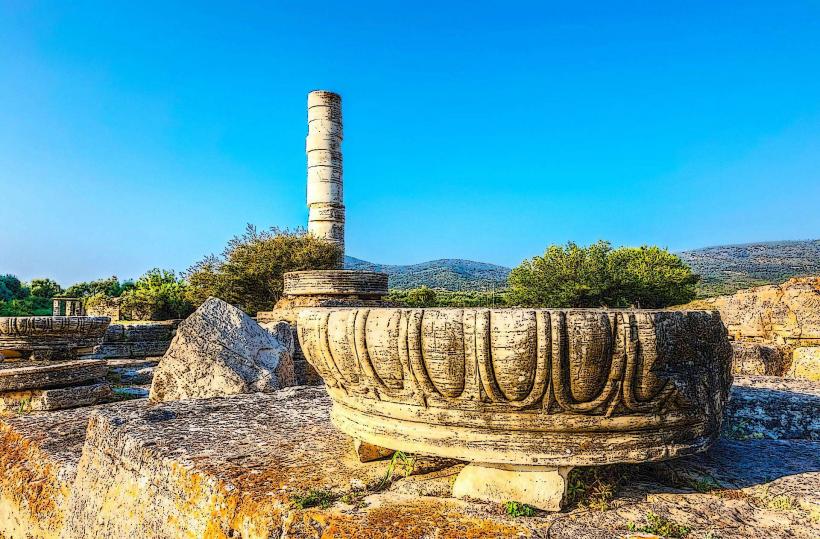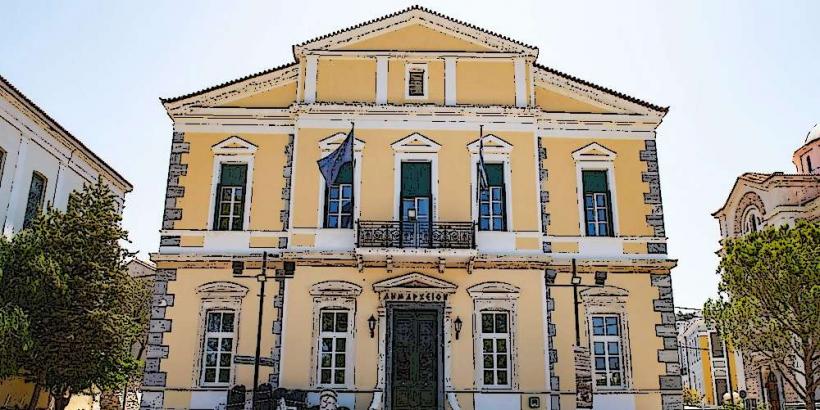Information
Landmark: Tunnel of EupalinosCity: Samos
Country: Greece
Continent: Europe
The Tunnel of Eupalinos (also known as the Eupalinos Tunnel) is one of the most remarkable feats of ancient engineering in Greece. Located on the island of Samos, it is considered a masterpiece of ancient Greek civil engineering and a key example of advanced architectural and hydraulic knowledge in the 6th century BCE.
1. Location and Overview
- Location: The tunnel is situated on the island of Samos, specifically near the ancient city of Pythagoreion. It is carved through the mountain of Amali, which divides the island, and is located about 1.5 kilometers from the ancient city.
- Purpose: The tunnel was constructed to bring fresh water from the Imbrasos River to the ancient city of Samos (modern-day Pythagoreion), which was facing water supply problems due to the dry conditions of the region.
2. Construction and Engineering Feat
- Designer: The tunnel was designed and constructed by the engineer Eupalinos of Megara, a skilled architect and hydraulic engineer who was commissioned by the tyrant Polycrates of Samos in the 6th century BCE. Eupalinos was tasked with creating an underground water system that could provide the city with a reliable and sustainable water supply.
- Construction Method: The tunnel is about 1,036 meters (3,399 feet) long, making it one of the longest tunnels of the ancient world. What makes the tunnel particularly remarkable is the fact that it was dug from both ends toward the middle. The construction of the tunnel was an engineering challenge, as the workers had to dig through solid rock without modern surveying tools.
- The tunnel's builders used a technique of double-heading, where two teams of workers began digging from opposite ends of the tunnel and met in the middle. The accuracy with which the two tunnels met is a testament to the skill of the engineers and workers, as they only missed by about 1 meter (3 feet), which was an extraordinary feat without the use of modern technology.
- The tunnel is characterized by a gentle slope, which was crucial for the consistent flow of water, allowing the water to travel from the source to the city through gravity. The tunnel itself is around 2 meters (6.5 feet) in width and 2.5 meters (8 feet) in height, wide enough to allow for maintenance and occasional access.
3. Water Supply and Hydraulic Engineering
- Function: The primary function of the tunnel was to serve as a water aqueduct that carried fresh water from the Imbrasos River to the city of Samos. It was designed to provide a continuous and reliable supply of water, which was crucial for both the daily needs of the population and the defense of the city, especially in times of siege.
- Water Management: The tunnel includes several features designed to manage the flow of water, including a series of side galleries used for ventilation and maintenance. These side galleries also helped to reduce the risk of cave-ins and provided access points for workers to ensure the tunnel remained clear of debris.
- Advanced Engineering: The construction of the Eupalinos Tunnel demonstrated an advanced understanding of hydraulics and engineering principles. The fact that the tunnel could transport water effectively for over 2,500 years is a testament to its design and construction quality.
4. Tunnel Layout
- The tunnel itself is straight and built with a slight slope to ensure the water flowed evenly and without interruption. The walls of the tunnel are made of stone, and the floor was carved to create a channel for the water.
- The tunnel was designed with precision to ensure that it was capable of withstanding natural forces, and it remained in use for centuries after its construction. The water supply system was integral to the growth and prosperity of the ancient city of Samos.
5. Historical Significance
- Historical Context: The Eupalinos Tunnel was built during the Archaic period of ancient Greece, under the rule of Polycrates, a tyrant known for his ambitious building projects. Polycrates aimed to make Samos a powerful and prosperous city-state, and the tunnel was an essential part of his efforts to improve the city's infrastructure.
- Legacy: The tunnel is often cited as one of the earliest and most sophisticated examples of engineering in antiquity. It predates the famous Roman aqueducts and is an essential piece of the history of ancient Greek engineering. Its construction influenced later engineering practices, especially in the fields of water management and tunnel construction.
- UNESCO World Heritage Site: The Eupalinos Tunnel is part of the Pythagoreion and Heraion of Samos, which was inscribed as a UNESCO World Heritage Site in 1992. The tunnel's inclusion in the UNESCO listing is due to its exceptional historical and architectural significance.
6. Modern-Day Visitors and Preservation
- Preservation: The tunnel is still accessible to visitors, although only a portion of it is open to the public. The sections that are open to tourists are well-preserved, and visitors can walk through parts of the tunnel, where they can see firsthand the ingenuity and precision involved in its construction.
- Tourism: The Eupalinos Tunnel is one of the major attractions on Samos Island, drawing visitors interested in ancient engineering, history, and archaeology. The Samos Archaeological Museum houses artifacts and additional information about the tunnel, including models and reconstructions.
- Access: The tunnel is located near the village of Kokkari, about 1.5 kilometers from the ancient city of Pythagoreion. There are marked trails that guide visitors to the site, and tours are available to learn more about the tunnel's history and engineering.
7. Cultural Impact
- The Eupalinos Tunnel remains a source of admiration for engineers and historians alike due to its sheer complexity and ingenuity. It is an enduring symbol of the advanced technological knowledge possessed by ancient Greek engineers.
- The tunnel is also a popular subject of study for those interested in ancient hydraulic engineering, the history of Greek civilization, and the practical applications of geometry and surveying.
8. Conclusion
The Eupalinos Tunnel is one of the most impressive examples of ancient Greek engineering and stands as a testament to the advanced technical skills of the ancient world. Its construction, carried out over 2,500 years ago, continues to inspire awe and admiration. The tunnel not only served a critical function in ancient times, providing water to the city of Samos, but also left a lasting legacy in the field of civil engineering. Today, it remains a major archaeological and historical landmark, attracting visitors from around the world who come to marvel at its design and learn about its crucial role in ancient Greek history.




